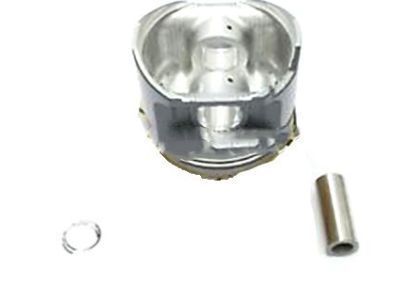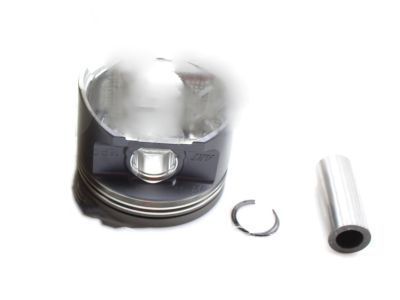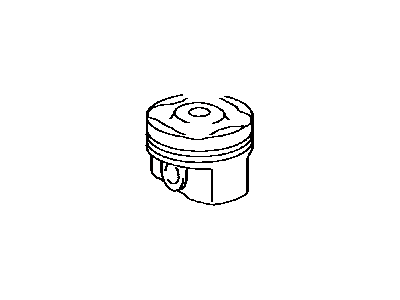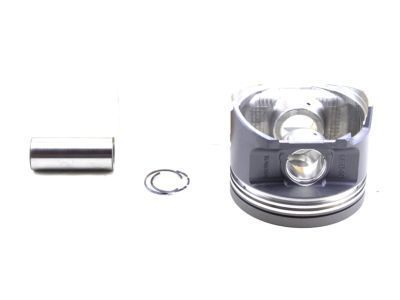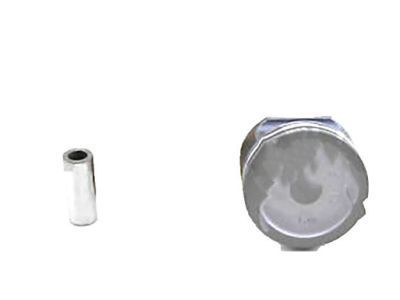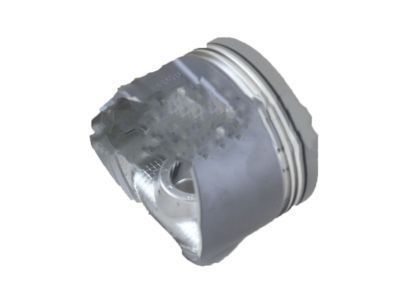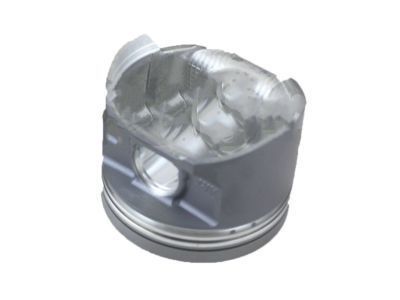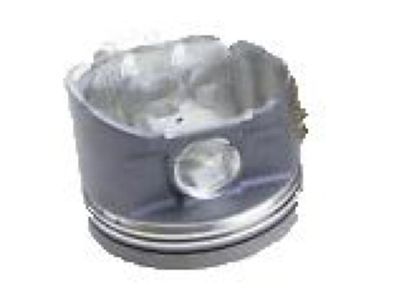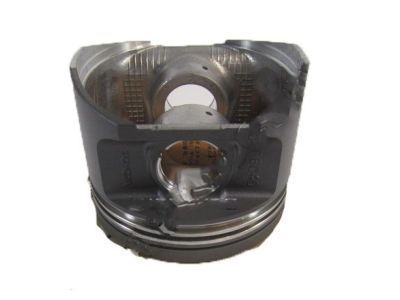

My Garage
My Account
Cart
Genuine 1992 Toyota Land Cruiser Piston
Engine Pistons- Select Vehicle by Model
- Select Vehicle by VIN
Select Vehicle by Model
orMake
Model
Year
Select Vehicle by VIN
For the most accurate results, select vehicle by your VIN (Vehicle Identification Number).
11 Pistons found
1992 Toyota Land Cruiser Piston Sub-Assembly with Pin
Part Number: 13103-66040$143.31 MSRP: $203.75You Save: $60.44 (30%)Ships in 1-2 Business DaysProduct Specifications- Other Name: Piston Sub-Assy, W/Pin
- Manufacturer Note: O/S 0.50
- Part Name Code: 13101
- Item Weight: 1.20 Pounds
- Item Dimensions: 4.2 x 3.9 x 3.6 inches
- Condition: New
- Fitment Type: Direct Replacement
- Require Quantity: 6
- SKU: 13103-66040
- Warranty: This genuine part is guaranteed by Toyota's factory warranty.
1992 Toyota Land Cruiser Piston Sub-Assembly with Pin
Part Number: 13105-66040$143.31 MSRP: $203.75You Save: $60.44 (30%)Ships in 1-3 Business DaysProduct Specifications- Other Name: Piston Sub-Assy, W/Pin
- Manufacturer Note: O/S 1.00
- Part Name Code: 13101
- Item Weight: 1.20 Pounds
- Item Dimensions: 4.0 x 3.9 x 3.5 inches
- Condition: New
- Fitment Type: Direct Replacement
- Require Quantity: 6
- SKU: 13105-66040
- Warranty: This genuine part is guaranteed by Toyota's factory warranty.
1992 Toyota Land Cruiser Piston Sub-Assembly with Pin
Part Number: 13101-66040-01$143.31 MSRP: $203.75You Save: $60.44 (30%)Ships in 1-3 Business DaysProduct Specifications- Other Name: Piston Sub-Assy, W/Pin; Piston
- Manufacturer Note: STD,MARK 1,REFER REPAIR MANUAL
- Part Name Code: 13101
- Item Weight: 2.10 Pounds
- Item Dimensions: 4.1 x 3.9 x 3.5 inches
- Condition: New
- Fitment Type: Direct Replacement
- Require Quantity: 6
- SKU: 13101-66040-01
- Warranty: This genuine part is guaranteed by Toyota's factory warranty.
1992 Toyota Land Cruiser Piston Sub-Assembly with Pin
Part Number: 13101-66040-03$132.54 MSRP: $188.43You Save: $55.89 (30%)Ships in 1-3 Business DaysProduct Specifications- Other Name: Piston Sub-Assy, W/Pin; Piston
- Manufacturer Note: STD,MARK 3,REFER REPAIR MANUAL
- Part Name Code: 13101
- Item Weight: 1.20 Pounds
- Item Dimensions: 4.1 x 3.9 x 3.7 inches
- Condition: New
- Fitment Type: Direct Replacement
- Require Quantity: 6
- SKU: 13101-66040-03
- Warranty: This genuine part is guaranteed by Toyota's factory warranty.
1992 Toyota Land Cruiser Piston Sub-Assembly with Pin
Part Number: 13101-66040-02$143.31 MSRP: $203.75You Save: $60.44 (30%)Product Specifications- Other Name: Piston Sub-Assy, W/Pin; Piston
- Manufacturer Note: STD,MARK 2,REFER REPAIR MANUAL
- Part Name Code: 13101
- Item Weight: 1.20 Pounds
- Item Dimensions: 4.1 x 3.9 x 3.5 inches
- Condition: New
- Fitment Type: Direct Replacement
- Require Quantity: 6
- SKU: 13101-66040-02
- Warranty: This genuine part is guaranteed by Toyota's factory warranty.
- Product Specifications
- Other Name: Piston Sub-Assy, W/Pin
- Manufacturer Note: STD,MARK 3,REFER REPAIR MANUAL
- Part Name Code: 13101
- Item Weight: 1.20 Pounds
- Item Dimensions: 4.0 x 3.7 x 3.3 inches
- Condition: New
- Fitment Type: Direct Replacement
- Require Quantity: 6
- SKU: 13101-61034-03
- Warranty: This genuine part is guaranteed by Toyota's factory warranty.
- Product Specifications
- Other Name: Piston Sub-Assy, W/Pin
- Manufacturer Note: O/S 1.50
- Part Name Code: 13101
- Item Weight: 1.20 Pounds
- Item Dimensions: 4.0 x 3.7 x 3.5 inches
- Condition: New
- Fitment Type: Direct Replacement
- Require Quantity: 6
- SKU: 13107-61034
- Warranty: This genuine part is guaranteed by Toyota's factory warranty.
- Product Specifications
- Other Name: Piston Sub-Assy, W/Pin
- Manufacturer Note: STD,MARK 1,REFER REPAIR MANUAL
- Part Name Code: 13101
- Item Weight: 1.20 Pounds
- Item Dimensions: 4.0 x 3.8 x 3.4 inches
- Condition: New
- Fitment Type: Direct Replacement
- Require Quantity: 6
- SKU: 13101-61034-01
- Warranty: This genuine part is guaranteed by Toyota's factory warranty.
- Product Specifications
- Other Name: Piston Sub-Assy, W/Pin
- Manufacturer Note: O/S 0.50
- Part Name Code: 13101
- Item Weight: 1.20 Pounds
- Item Dimensions: 3.9 x 3.7 x 3.4 inches
- Condition: New
- Fitment Type: Direct Replacement
- Require Quantity: 6
- SKU: 13103-61034
- Warranty: This genuine part is guaranteed by Toyota's factory warranty.
- Product Specifications
- Other Name: Piston Sub-Assy, W/Pin
- Manufacturer Note: STD,MARK 2,REFER REPAIR MANUAL
- Part Name Code: 13101
- Item Weight: 1.20 Pounds
- Item Dimensions: 4.0 x 3.6 x 3.3 inches
- Condition: New
- Fitment Type: Direct Replacement
- Require Quantity: 6
- SKU: 13101-61034-02
- Warranty: This genuine part is guaranteed by Toyota's factory warranty.
- Product Specifications
- Other Name: Piston Sub-Assy, W/Pin
- Manufacturer Note: O/S 1.00
- Part Name Code: 13101
- Item Weight: 1.20 Pounds
- Item Dimensions: 4.0 x 3.7 x 3.4 inches
- Condition: New
- Fitment Type: Direct Replacement
- Require Quantity: 6
- SKU: 13105-61034
- Warranty: This genuine part is guaranteed by Toyota's factory warranty.
1992 Toyota Land Cruiser Piston
With ToyotaPartsDeal.com, you have access to an extensive inventory of genuine 1992 Toyota Land Cruiser Piston, all priced competitively. Feel secure in your purchase, as all our OEM 1992 Toyota Land Cruiser Piston are covered by the manufacturer's warranty. Plus, we offer a hassle-free return policy and speedy delivery service.
1992 Toyota Land Cruiser Piston Parts Questions & Experts Answers
- Q: How to install piston/connecting rod assemblies for the 1992 Toyota Land Cruiser?A: Before installing the piston and connecting rod assemblies, ensure the cylinder walls are clean, the top edge of each cylinder is chamfered, and the crankshaft is in place. Remove the cap from the number one connecting rod, take out the original bearing inserts, and wipe the bearing surfaces with a clean, lint-free cloth. Clean the back side of the new upper bearing insert and place it in the connecting rod, ensuring the tab fits into the recess without hammering or nicking the bearing face. Repeat this for the other bearing insert in the rod cap, keeping all mating surfaces clean and oil-free. Position the piston ring gaps around the piston, ensuring the dot points towards the front of the engine. Use a section of plastic or rubber hose over each connecting rod cap bolt, lubricate the piston and rings with clean engine oil, and attach a piston ring compressor, leaving the skirt protruding about 1/4-inch. Rotate the crankshaft until the number one connecting rod journal is at bottom dead center and apply engine oil to the cylinder walls. Insert the piston/connecting rod assembly into the number one cylinder bore with the arrow or notch facing the front of the engine, resting the ring compressor on the engine block. Tap the top edge of the ring compressor to ensure contact with the block, then gently tap the piston with a wooden hammer handle while guiding the connecting rod onto the crankshaft journal, being cautious of any resistance. After installation, check the connecting rod bearing oil clearance before permanently bolting the rod cap in place by laying a piece of Plastigage on the number one connecting rod journal. Clean the connecting rod cap bearing face, remove the protective hoses, and install the rod cap, ensuring the mating marks align. Tighten the nuts to the specified torque in three steps, using a thin-wall socket to avoid erroneous readings. Remove the nuts and detach the rod cap without disturbing the Plastigage, then compare the width of the crushed Plastigage to the scale to obtain the oil clearance, ensuring it meets specifications. If the clearance is incorrect, check for dirt or oil between the bearing inserts and the connecting rod or cap, and recheck the journal diameter. Carefully scrape off any Plastigage material, ensuring not to scratch the bearing, and apply a uniform layer of clean moly-base grease or engine assembly lube to the bearing faces. Slide the connecting rod back into place, remove the protective hoses, install the rod cap, and tighten the nuts to the specified torque, ensuring the numbers on the connecting rod match. Repeat this procedure for the remaining pistons and connecting rods, keeping the bearing inserts and connecting rods clean, ensuring the correct piston/rod assembly for each cylinder, and lubricating the cylinder walls and bearing faces. After all assemblies are installed, rotate the crankshaft by hand to check for binding, and finally, check the connecting rod endplay, comparing it to specifications to ensure correctness. If new rods or a crankshaft were installed, inadequate endplay may require resizing at an automotive machine shop.
